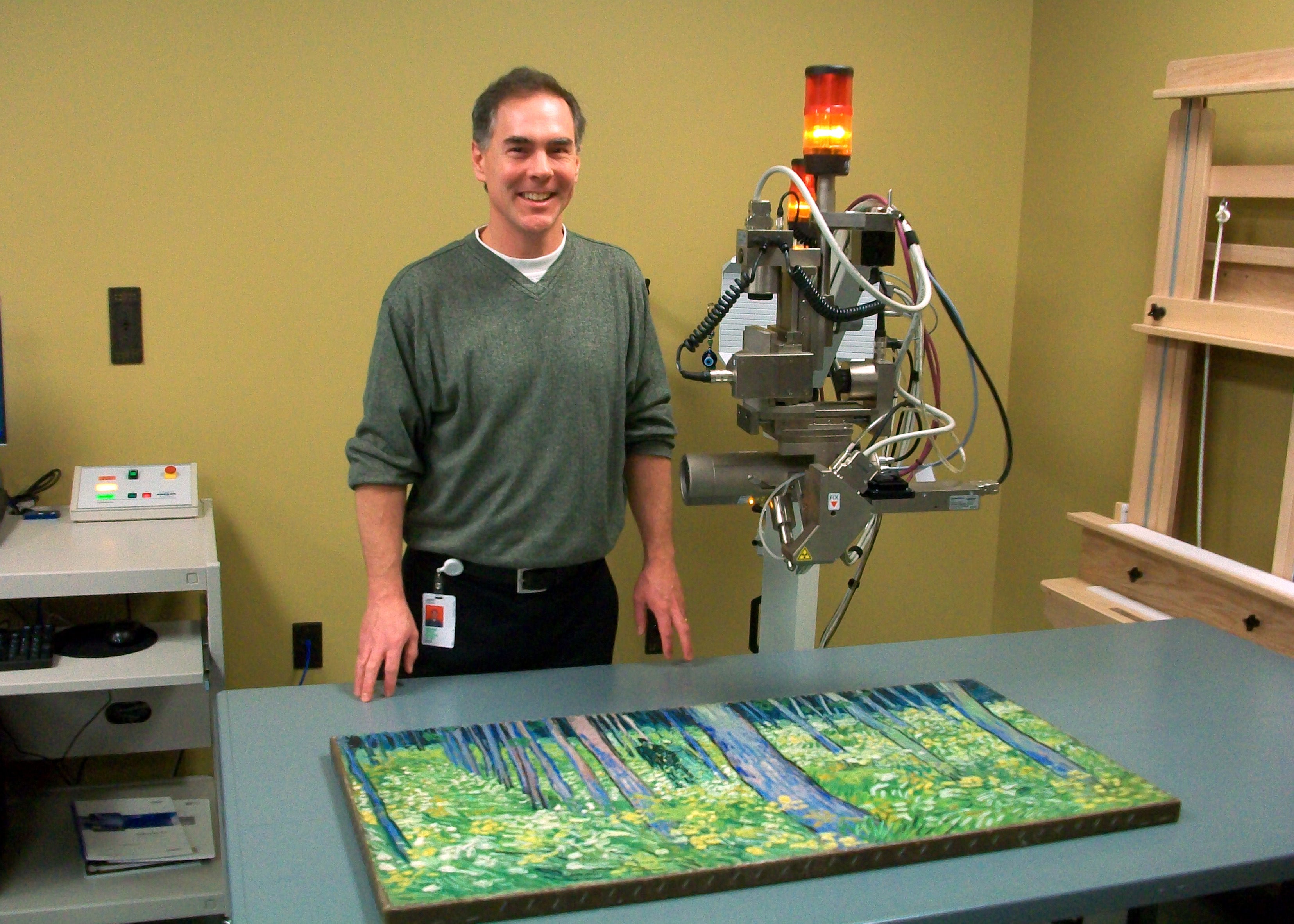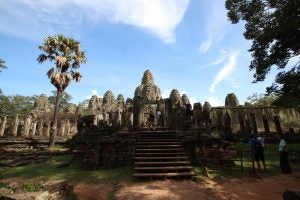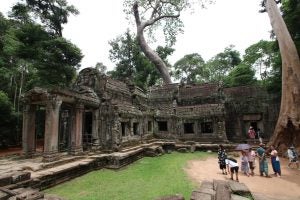CAC offers lecture series, begins Tuesday
Published 5:55 pm Friday, October 19, 2018

- (Contributed photo) Jeff Fieberg works on “Undergrowth with Two Figures,” by Vincent van Gogh. Fieberg is one of many Centre College professors who will appear in a lecture series kicking off next week at the Community Arts Center.
By KATE SNYDER
Community Arts Center
The Community Arts Center’s fall arts appreciation lecture series will take attendees around the world through a diverse series of presentations. The fall series is offered in partnership with Centre College and features five Centre professors, none of whom are from the art department.
“We love the opportunity to tap into the wide-ranging research interests of the Centre College faculty,” says Arts Center Executive Director Niki Kinkade. “So many professors at Centre have fascinating knowledge about various art forms, even if they teach primarily in an entirely different field. The fall series features a biologist, a chemist, and an archaeologist, along with professors in the humanities and classics departments.”
The series will be offered from noon to 1 p.m. Tuesdays, through Nov. 13. The lineup includes:
- The Nature-Inspired Tribal Art of Borneo, Oct. 23
Presented by Matthew Klooster, assistant professor of biology. This lecture will be an “interactive presentation,” focusing on the seven main ethnic groups of the Dayak people.
The island of Borneo in Southeast Asia is home to the oldest rainforest on Earth and is blanketed by one of the most biodiverse landscapes. Included in this tremendous natural diversity are the nearly 200 ethnic subgroups that make up the Dayak people, which all possess a deep physical and spiritual connection to their tropical environment.
Klooster will focus on the imagery typically utilized in each culture’s artistic expression, then attempt to draw connections to the native rainforest wildlife that inspires the creative work, and discuss why these organisms are so important to the native people.

Contributed photo/Mark Galatowitsch
Bayon Temple is shown in Angkor Wat.
Klooster’s research interests are plant population and community ecology, evolutionary-ecology, symbioses, phylogeography, population genetics, genomics and conservation of rare and endangered species.
- Digital Reconstruction of a Van Gogh Masterpiece, Oct. 30
Presented by Jeffrey Fieberg, the John C. Walkup Professor of Chemistry, the lecture will discuss how scientific techniques were used to investigate how Vincent van Gogh’s piece, “Undergrowth with Two Figures,” has been changed over time.
The painting is one of Van Gogh’s late masterpieces and the most-cherished painting in the Cincinnati Art Museum’s collection. This interactive presentation will provide background information on Van Gogh’s life in France, where ”Undergrowth with Two Figures” fits within his life’s work, and past conservation work on the painting. The painting has changed significantly since Van Gogh first executed it.
In discussion about the techniques used to investigate the changes in order to produce a digital reconstruction of the painting, a demonstrations of X-ray fluorescence, the primary analytical tool used, will be performed during the lecture.
Fieberg’s research interests are in the technical art historical analyses of modernist paintings and analyses of artists’ materials.
- “The Peaceable Kingdom by Edward Hicks,” Connections Between Art and Literature, Nov. 6
Presented by Milton Reigelman, who retired from Centre in 2017, after serving many roles.
The Quaker minister and painter Edward Hicks is best known for his Peaceable Kingdom pictures, of which 62 exist. The paintings represent a messianic prophecy in the book of Isaiah (11:6): “The wolf also shall dwell with the lamb, and the leopard shall lie down with the kid; and the calf and the young lion and the fatling together; and a little child shall lead them.” In his talk, Reigelman will focus on the 1826 version of the motif and its connection to American literature up to that point.
Reigelman was known as a professor of American literature and humanities for more than 35 years. At different times he has also overseen admissions and financial aid, student life, development, planning, alumni affairs, the Norton Center for the Arts and communications.
- The Art and Archaeology of Angkor Wat, Nov. 13
Presenters Robyn Cutright and Danielle La Londe team up to offer this lecture.
Angkor Wat is one of the great architectural and religious marvels of the world. Located in modern-day Cambodia, the site was built at the peak of the Khmer empire’s might and influence. Moreover, this vast temple complex was part of a sophisticated water irrigation and reservoir system that supported the region’s unusually dense population.
Cutright and La Londe discuss the archaeology of Angkor Wat and its connection the the temple’s symbolic architecture and decoration.

Contributed photo/Mark Galatowitsch
Ta Prohm Temple is shown in Angkor Wat, in Southeast Asia.
Cutright is the Charles T. Hazelrigg Associate Professor of Anthropology. Her research interests include household archaeology, anthropology and archaeology of food and cuisine, complex societies, gender studies, paleoethnobotany, and archaeology of the Andes and coastal Peru.
La Londe is an assistant professor of classics. She teaches Latin language and literature, and a wide range of courses on classical antiquity, including Pompeii, and the reception of classical antiquity in film, and the first-year humanities sequence. Her research focuses on political thought in Latin poetry of the late republic through the age of Nero.
IF YOU GO
Attendees may pre-register for the fall arts appreciation lecture series for $40 or pay $13 per lecture at the door. Pre-registration for the series is found at www.communityartscenter.net/arts-appreciation.






